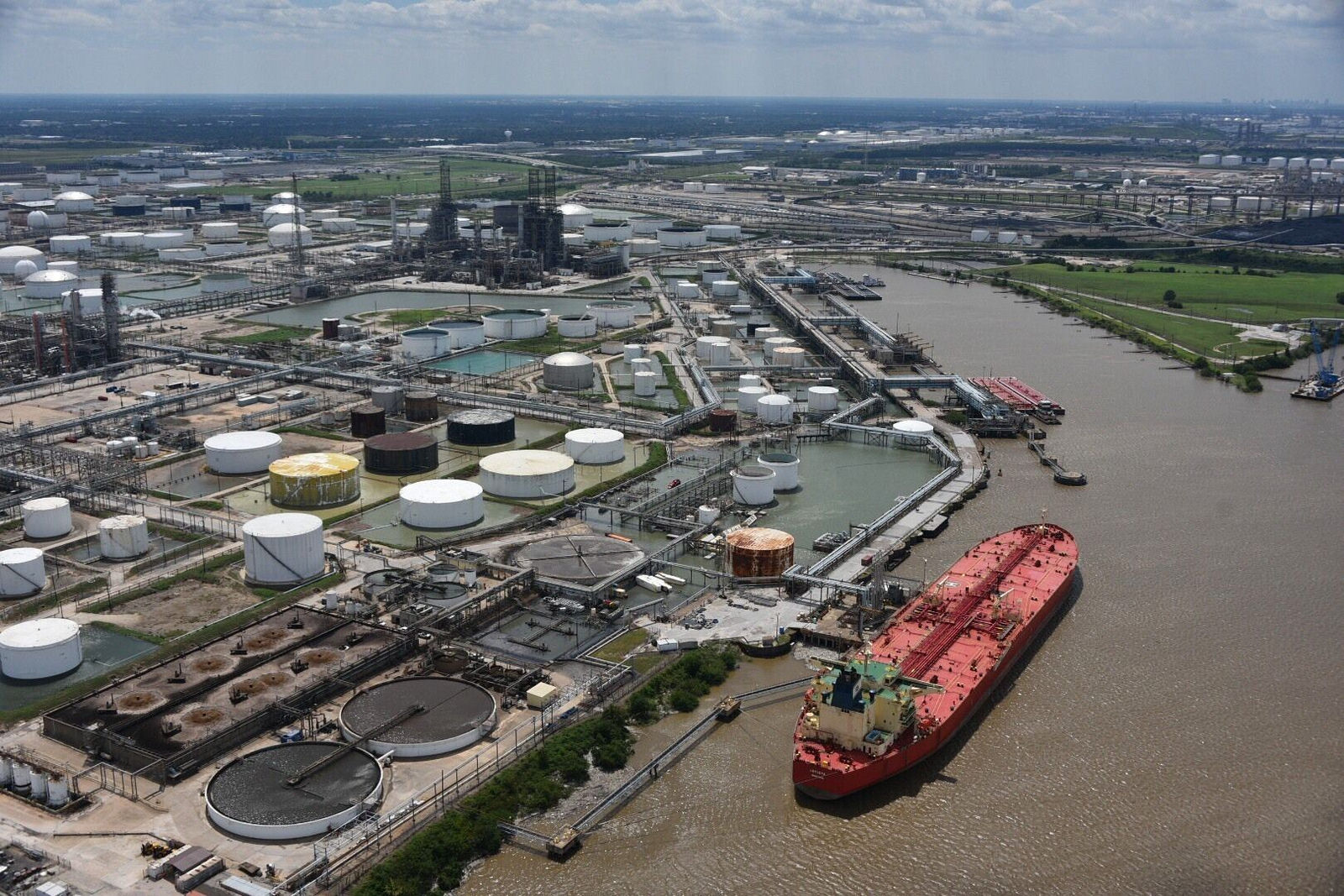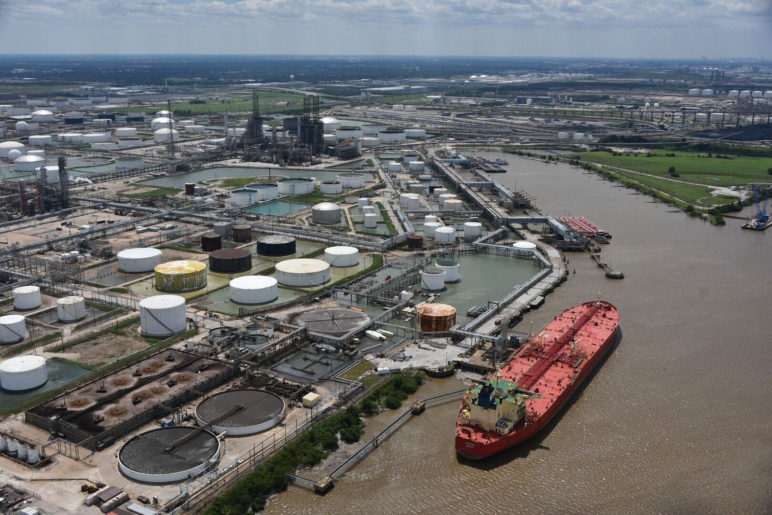When Hurricane Harvey slammed into coastal Texas, it demonstrated why we plan for worst case scenarios. It turned 33 of the state’s counties into federal disaster areas, knocked out power for nearly 300,000 residents, and shredded the appearance of safety at a range of oil, gas, and chemical sites.
Harvey’s aftermath is a prime window for the Northwest to evaluate the risks inherent in the oil and petrochemical industry, and for the region to examine its own preparedness for disaster.
While the fossil fuel industry has its sights set on making the Pacific Northwest over in the Gulf Coast’s image, Harvey illustrated in alarming relief the importance of robust environmental safeguards, even for scenarios that fossil fuel project backers argue are unlikely. Regardless, the Northwest is highly susceptible to unpredictable and catastrophic earthquakes (not to mention volcanos, security threats, and even the occasional Pacific typhoon) that could rupture pipelines, shut off power for weeks or months, and severely limit emergency response capabilities. Harvey’s aftermath is a prime window for the Northwest to evaluate the risks inherent in the oil and petrochemical industry, and for the region to examine its own preparedness for disaster.
Texas is home to one of the largest concentrations of energy infrastructure in the country. Six counties in Houston are home to 230 chemical plants, 33 oil refineries, and hundreds of miles of pipeline. If any place is equipped to manage fossil fuel safety incidents, it should be here. But Harvey demonstrated just how frail our emergency systems really are: chemical plants and refineries reported more than two dozen major air pollution releases in the period leading up to Harvey and its immediate aftermath.
Storage tank failures
One common source of failure during Harvey was so-called “floating roofs” on fossil fuel and petrochemical storage tanks. The roofs are designed to rise and fall depending on the volume within tank, helping control how much of the fossil fuel product is lost to evaporation. A study on the performance of these storage tanks in Texas and Louisiana following the 2005 hurricanes Katrina and Rita found that they are prone to buckling and becoming dislodged during hurricanes. Harvey demonstrated that they may also be prone to collapse.
ExxonMobil: The Baytown refinery and chemical plant on the Houston ship canal is the second largest refinery in the country. The roof on a storage tank partially sank during the storm, dipping below the surface of the chemicals stored within and causing 140 pounds of the carcinogen benzene and toluene to leak into the air as well as over 12,000 pounds of unspecified volatile organic compounds and 240 pounds of the petrochemical xylene.
Shell: Two storage tank floating roofs sank at the company’s Deer Park refinery and chemical plant about twenty miles east of downtown Houston. One roof failure caused crude oil to spill onto the roof and released air emissions. The other released about 40,000 pounds of contaminants into the air. A hole in the roof drainage system on a third tank caused a smaller contaminant leak after the storm was over.
Valero: Valero reported that a floating roof failure at its Harris County facility caused crude oil to leak onto the roof of the tank and into containment areas. The company also reported thousands of pounds of emissions released as a result of the roof failure, including nearly 2,000 pounds of benzene and more than 92,000 pounds of volatile organic compounds.
Kinder Morgan: Kinder Morgan reported that two floating roofs sank at its Pasadena facility, “causing product to spill.” Nearly 400,000 pounds of hazardous chemicals spilled at the facility. Over 30 petrochemicals, carcinogens, and contaminants leaked as a result of one of the storage tank roof failures, in quantities ranging from 200 to 85,000 pounds each. The second storage tank leaked over 110,000 pounds of volatile organic compounds, in addition to hundreds of pounds of the carcinogen benzene and three thousand pounds of the petrochemicals xylene and toluene.
The company also experienced problems with a floating roof at its Galena Park facility. About 5,000 pounds of crude oil leaked onto the roof and into the containment area of a storage tank. Additionally, an unidentified source released over 76,000 pounds of volatile organic compounds from another tank in the aftermath of the hurricane, leading to a partial facility evacuation.
The danger of losing power
Natural gas and petrochemical plants also pose a public safety risk simply by losing electric power. Since many of the gases processed or used at the facilities must be refrigerated, the chemicals pose serious risk of explosion when the refrigeration fails. That’s what happened when the Arkema petrochemical plant in Crosby, Texas lost power and flooding damaged its backup generators. There was no way to prevent the explosion once the facility and generators lost power, and due to safety concerns of trying to fight the fire, 500,000 pounds of organic peroxides burned without intervention. The incident released over 2,000 pounds of carbon monoxide and 3,000 pounds of volatile organic compounds.
Pipeline leaks
On August 28, a 14-inch pipeline owned by Williams Companies spewed anhydrous hydrogen chloride for several hours at La Porte, Texas. Once released, the gas mixed with moisture in the air to produce hydrochloric acid, a corrosive that can damage respiratory organs, eyes, skin, and intestines. The pipeline leak triggered a “shelter in place” for residents in the northeast section of the city.
“The dangers of being unprepared”
Prior to the storm, the fossil fuel industry was full of empty promises. The American Chemistry Council said: “chemical companies know well to avoid the dangers of being unprepared for any threat.” The American Petroleum Institute said: “our industry has applied lessons from previous hurricanes and developed new technology, best practices, and safety standards.”
Harvey showed that the oil industry’s idea of “best practices” is not good enough, and it offered a stark warning for regions like the Northwest that are considering large-scale expansions of fossil fuel infrastructure and that are prone to an array of natural disasters. A Northwest disaster would of course be different from the hurricane that hit Houston, but would not necessarily be less catastrophic. In fact, the known hazards in the Pacific Northwest are less predictable and more difficult to track than approaching hurricanes, for which we have strong weather models that can provide ample forewarning.
Two areas where the Northwest can improve upon Houston’s failures are shutdown procedures and public notification. Not only did severe weather hamper emergency response in Houston, but advance shutdown procedures brought their own hazards. Facility shut downs produce excess emissions because pollution control devices can’t be operated properly and companies flare numerous chemicals. In fact, Houston’s petrochemical industry intentionally released more than one million pounds of harmful pollution into the air as part of the shutdown process before the above-mentioned accidents even occurred. The results included persistent headaches, nausea, and other illnesses associated with exposure to the chemicals released, which included excess levels of nitrous oxides as well as the carcinogen benzene and 1,3-butadiene, which can damage the lungs and central nervous system. Updating equipment and facility design can help reduce the emissions released by facility shutdowns, and facilities can also lighten the cumulative emissions burden if they don’t wait until the last minute to shut down.
The public did not receive adequate warnings about intentional or accidental chemical releases. Texas residents tweeted about an “unbearable” chemical smell associated with the Exxon leaks for two days before the company disclosed the pollution releases. State agencies had to repeatedly ask fossil fuel companies to check on the status of their facilities. In emergency situations such as Harvey, it is inefficient and impractical for state health regulators to track down each company to obtain this information—-a better approach would be mandatory, daily reporting by facility operators.
It’s also high time that the federal government proactively address chemical leaks and emergency preparedness. Updates to federal regulations on chemical releases have languished for more than two decades, with no updates since 1992. The Chemical Safety Board has unsuccessfully tried to close loopholes for reactive chemicals since 2002, and although the Obama Administration issued stricter rules for chemical plants after a 2013 explosion in West Texas killed 15 people, the Trump administration put those rules on hold for two years in the months before Harvey.
Houston’s disaster should inform policy in the Northwest.
Houston’s disaster should inform policy in the Northwest. Public notification should be standard operating procedure for intentional shut-downs that would generate chemical releases from numerous facilities or even single facilities if they are large-scale operations. Further, we must be prepared to manage releases to the greatest extent possible when disaster strikes. And we should not take our cues from Texas, where the state’s Council on Environmental Quality actually shut down its air quality monitors in the Houston area leading up to the storm and where, at the Council’s request, Texas Governor Greg Abbott suspended more than a dozen state regulations governing air emissions as well as how companies deal with spills and waste. (EPA Administrator Scott Pruitt also signed off on a Clean Air Act waiver on certain fuel requirements for the Texas oil industry in the wake of Harvey.) The Northwest should learn a lesson from Harvey and prepare a better response for disasters that could disrupt an oil refinery, rupture a gas pipeline, or spill petrochemicals into a waterway.












Mona McNeil
Tarika, I met you briefly at Disjecta in portland (white haired woman from Vancouver, Wa.). Great article!!! We are trying to stop the Vancouver oil train terminal and the floating roof issue is being mentioned. Thanks so much for your work. Mona McNeil